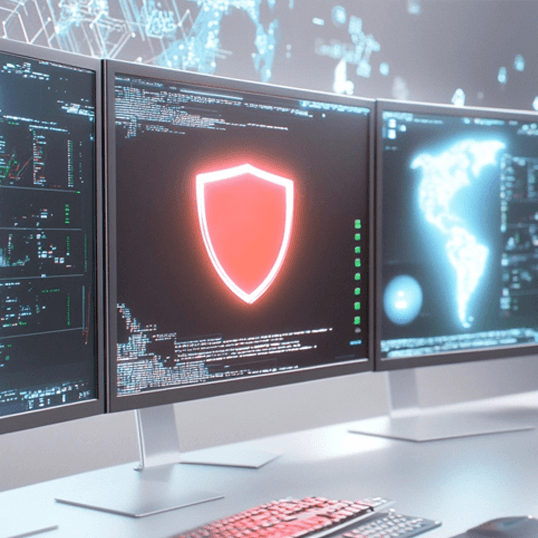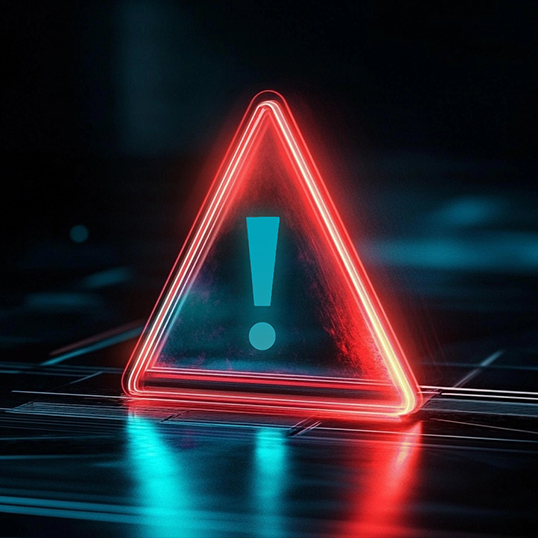The fallout from the June 2025 Israeli and American strikes on Iranian nuclear and military sites is unfolding not just on the ground, but in the volatile digital sphere. While the kinetic conflict remains localized, its cyber consequences are undeniably global. Iranian threat actors, including state-backed Advanced Persistent Threat (APT) groups and their hacktivist proxies, have quietly escalated their operations, laying the groundwork for potential cyber retaliation aimed at U.S. and European organizations.
So far, we haven’t seen full-scale Iranian state-sponsored cyberattacks. Instead, the activity has been dominated by pro-Iranian hacktivist groups conducting DDoS attacks, primarily aimed at financial organizations and aerospace & defense companies. Meanwhile, signs of additional threats persist: increased scanning for industrial control systems (ICS), phishing campaigns, and dark web propaganda designed to obscure attribution. A recent FBI/CISA alert highlights growing concerns over exposed ICS infrastructure and elevated risks to operational technology (OT) environments.1
Tehran’s Cyber Doctrine and Proxy Strategy
Iran’s cyber operations are a calculated blend of espionage, disruption, and narrative shaping. Most activity can be traced back to two primary entities: the Islamic Revolutionary Guard Corps (IRGC), which spearheads offensive cyber and psychological operations, and the Ministry of Intelligence and Security (MOIS), focused on surveillance efforts.
Key Iranian APT Groups and Their Evolving Tactics:
- APT35 (Charming Kitten, Magic Hound):
This prolific group has recently broadened its scope from conventional surveillance to highly sophisticated, high-trust phishing campaigns. Since mid-2025, APT35 has targeted cybersecurity researchers and academics, leveraging AI-crafted emails that impersonate industry figures. This represents a significant evolution in their tradecraft, raising the bar for defense strategies.2 - APT33 (Elfin):
This group exhibits dual-use intent. Their malware kits notably include wiper components engineered to destroy data and disrupt OT environments. While no major destructive attacks have been publicly reported recently, APT33’s historical focus on energy and defense sectors means its tools remain a latent, potent threat.
The Role of Hacktivist Proxies:
Beyond state-sponsored APTs, ideologically driven groups like CyberAv3ngers and Mr. Hamza play a crucial role. While claiming independence, these actors consistently mirror IRGC narratives and synchronize with their campaign timings. They have launched Distributed Denial of Service (DDoS) attacks on municipal and financial sector websites, underscoring their function in Tehran’s broader digital pressure strategy.
What these proxies may lack in technical sophistication, they compensate for in persistence and publicity. Their activities, though often lower-impact, serve to keep defenders on high alert and can distract from more covert, state-backed operations.
Tactics to Watch: From Social Engineering to OT Sabotage
The fundamental technical playbook hasn’t drastically changed, but it has certainly become sharper and more insidious.
- Enhanced Spear-Phishing: This remains the primary vector for initial access. Now, it’s significantly enhanced with AI to generate convincing pretexts and fabricate fake identities, making detection increasingly challenging.
- PowerShell for Persistence: Iranian groups consistently exploit PowerShell to maintain persistence on compromised systems, drop backdoors, and execute lateral movement across networks.
- Credential Theft & DNS Tunneling: Credential theft is a common objective, enabling access to sensitive internal systems. Meanwhile, DNS tunneling is frequently used for covert command-and-control communications, making detection difficult.
- Shift Towards Destructive Impact: Perhaps the most concerning development is the noticeable shift toward destructive capabilities. Groups like APT33 have moved beyond pure espionage, developing tools capable of causing real-world disruption. Whether through wiper malware or corrupted OT commands, Iran’s cyber toolkit is increasingly designed to both gather intelligence and exert pressure through digital sabotage.
Potential Targets
Given the evolving threat landscape, several sectors should exercise extreme vigilance:
- Operational Technology (OT) and Critical Infrastructure: This is the paramount concern. OT systems—especially in water utilities, power plants, and transport networks—have been explicitly flagged by the U.S. government as vulnerable to Iranian targeting. The recent exposure of Israeli-made Unitronics PLCs (Programmable Logic Controllers) serves as a stark reminder of how digital vulnerabilities can manifest into real-world implications.3
- Finance and Cryptocurrency: While direct attacks on financial institutions haven’t been widespread, Iran’s past interest in cryptocurrency exchanges and banking infrastructure makes this sector a logical next step. Credential theft and supply chain exposures remain realistic threats.
- Technology and Telecom: Iranian threat groups, particularly APT35, have intensified phishing campaigns targeting cybersecurity experts, researchers, and executives across the tech, telecom, and academic sectors. These operations frequently employ sophisticated impersonation tactics, often leveraging AI-generated content, to gain access to intellectual property and sensitive research networks.
- Defense and Manufacturing: These sectors have historically been prime targets for Iranian cyber espionage. While no major breaches have surfaced in recent months, Iran’s capability to target defense contractors and industrial systems remains highly credible, particularly if geopolitical tensions continue to escalate.
Recommendations for Bolstering Cyber Defenses
In light of these escalating threats, organizations must act proactively. Here are some recommendations for bolstering your cyber defenses:
- Audit and Segment OT Systems: Ensure that no internet-facing industrial controls are exposed. Implement strict segmentation from IT networks to significantly reduce lateral movement risks if an intrusion occurs.
- Reinforce Phishing Resilience: Move beyond basic simulations. Train staff to recognize “long-game” tactics, such as rapport-building and impersonation over extended periods, which sophisticated actors are increasingly using.
- Reevaluate Threat Posture Through a Geopolitical Lens: Don’t rely solely on technical risk models. Continuously assess who might target your specific sector or organization in the context of evolving global conflicts and political motivations.
- Monitor and Act on Government Alerts: Integrate your Security Operations Center (SOC) monitoring directly with advisories from CISA, FBI, and relevant international agencies. Iran’s reactive cyber doctrine means strategic geopolitical updates often correlate directly with increased cyber risk.
References
[2] https://thehackernews.com/2025/06/iranian-apt35-hackers-targeting-israeli.html
[3] https://www.cisa.gov/news-events/cybersecurity-advisories/aa23-335a













